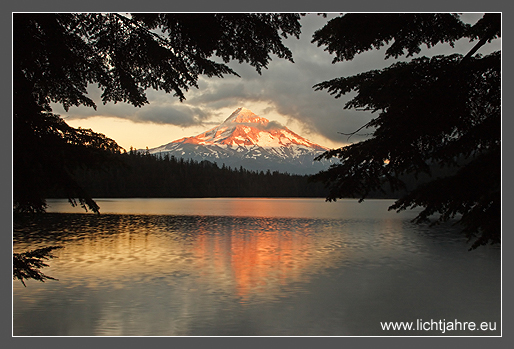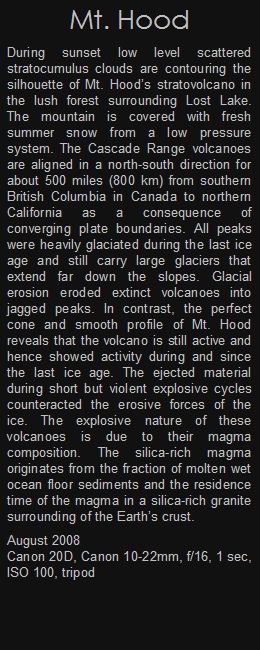

Mt. Hood
During sunset low level scattered stratocumulus clouds are contouring the silhouette of Mt. Hood’s stratovolcano in the lush forest surrounding Lost Lake. The mountain is covered with fresh summer snow from a low pressure system. The Cascade Range volcanoes are aligned in a north-south direction for about 500 miles (800 km) from southern British Columbia in Canada to northern California as a consequence of converging plate boundaries. All peaks were heavily glaciated during the last ice age and still carry large glaciers that extend far down the slopes. Glacial erosion eroded extinct volcanoes into jagged peaks. In contrast, the perfect cone and smooth profile of Mt. Hood reveals that the volcano is still active and hence showed activity during and since the last ice age. The ejected material during short but violent explosive cycles counteracted the erosive forces of the ice. The explosive nature of these volcanoes is due to their magma composition. The silica-rich magma originates from the fraction of molten wet ocean floor sediments and the residence time of the magma in a silica-rich granite surrounding of the Earth’s crust.
August 2008
Canon 20D, Canon 10-22mm, f/16, 1 sec, ISO 100, tripod




















